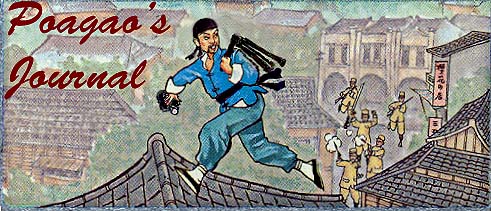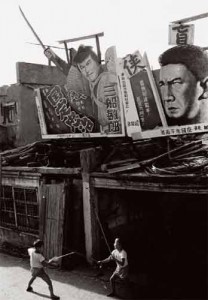Yeah, it’s gear talk time.
A year ago, in May of 2012, I obtained an Olympus OM-D E-M5 micro four-thirds mirrorless camera. I’d been using my Panasonic GF1 for everyday shooting for a couple of years, but despite my general satisfaction with the shots it produced, the sensor was a bit limited when the light fell, and I missed having a viewfinder. When I first got it, I had to get out of the habit of jamming it up against my face.
“Enter the E-M5!” most reviews will say about here, for trendy dramatic writing purposes. Somewhat foolishly, I decided to take the Oly as my only camera on a trip to the UK to attend the London Festival of Photography, which was showing some of my work as part of the BME collective. I didn’t relish the idea of dragging (or “lugging”, as popular parlance would put it) the Invincible Rabbit (Canon 5D2) with two huge lenses all around that vast city for a week, and the Oly seemed like it would be up to the task.
It wasn’t. Oh, the photos themselves were ok, and the image stabilization worked wonders, but the new batteries hadn’t been charged enough times to live up to their regular battery life, and I only had two. Also, my main lens, which had been a delight on the GF1, namely the Panasonic 20mm f1.7, hunted like a basset hound in an old animated Disney flick whenever the light wasn’t stellar, which it mostly wasn’t. Slowly it would griiiind baaaaack and foooooorth before giving up, my would-be subject long gone. The Olympus 12mm and 45mm didn’t have such a problem, but they are not my favorite focal lengths. 50mm equivalents always felt a bit too close for the crowded alleys and byways of Taipei; 35 was more or less my target for a general-purpose lens.
So, after returning home, I made do with the E-M5 as my everyday camera, but due to the frustrations with the 20, I used the 9-18 in good light and just cursed it roundly in bad. The batteries eventually attained reasonable lifespans, though I bought another just in case. My Leica M6 film camera also saw a good bit of use during this period.
Last Christmas I bought myself a present that would eventually transform the E-M5 into a much better camera: The Olympus 17mm f1.8. Was it instant magic? Alas, no, I wasn’t that lucky. Although the lens was far more willing to grab focus quickly and surely in most kinds of light, which was night-and-day after the 20mm, I landed a bad copy of the lens that had elements out of alignment so that the lower right corner was always front focused. I traded it for another copy that was slightly better in this respect, but still out of whack (It was this copy that I took on a trip to the Middle East earlier this year, probably also somewhat foolishly, as we were in cars or on camels most of the time, and I could have easily taken the Rabbit). When I got back, I sent the lens in to Olympus Taiwan for inspection, and they sent it back with the elements all in place. However, either they have a very moist work environment or the lab tech didn’t wear gloves, as the lens came back with a dirty interior element, which necessitated another trip for cleaning. Finally, I had a proper lens for this camera.
Now, about this camera: It’s light and small. It doesn’t force me into a position better suited to an Australopithecus (no offense to any reconstituted Australopitheci out there). The electronic viewfinder is adequate, not laggy but opaque in very low light, though the images are too grainy over ISO5000 anyway. Jamming it against your face makes for a more stable vantage point, and it’s closer to what you see anyway. It even might provide you with a slightly wider view, as the camera is 1-2 feet further back that way.
Of course, niggles exist: The viewfinder cover has a nasty habit of snapping off, and replacements are pricey. The buttons are small and finicky, but I just set the camera and go; the only controls I need are the top dials, and those work well. The on/off button is much better than the E-P1: I can tell by feel if the camera is on or not, and it falls right to hand when it’s hanging around my neck, right where I would put my hand when I want to bring it to my eye. Seeing changes to exposure in the viewfinder is a very nifty thing. If you want to review your shots in the ratio you composed them with and that ratio is something other than the native 4:3, however, you have to set the camera to take JPEG+RAW, as it refuses to show RAW shots in anything but 4:3. I have no idea why it doesn’t do this. The GF1 would. So I just suck it up and accept that I’m only using half of my memory cards.
If you want to see a clear view through the EVF when you raise the camera to eye level, you can just forget it, young person. You either get the one style that overlays information over the view if you have the EVF on all the time, or you can choose the style that separates the information nicely from the view, but you have to wait for it to wake up and realize you’re looking through the EVF. Sorry, no, what was that? Nope, picture’s gone. Never mind. So I just suck it up and imagine what the view would look like without all the crap on it, just so I don’t have to lift the camera to my eye and see nothing at all. Having the EVF more or less in line with the lens is much better than using the periscope-like additional EVFs other cameras use.
The image stabilization is amazing. If the camera is on and active, it’s ready at an instant to take a shot, or several if the impressively fast 9-fps shooting mode is on (fewer with the 20, alas). If it is off, or asleep, however, you must wait for it to shake itself awake, sit for a moment, and then decide it’s ready. Forget that shot, I just got up. Coffee? No? Fine, ok. Now, about that shot? Sorry, no, it’s gone, never mind again.
The shutter sound/feel is incredible. My previous standard was my M6, but the Oly trumps even that. Only perhaps an M3 would be better. Solid, quiet, even pleasurable, as if butter is involved somehow. Going back to the GF1 is like using a weed-whacker. Some people complain of a barely audible hiss when the IS is on, but seriously? Complaining about a barely audible hiss?
The tilt screen is much more useful than I’d imagined, for taking shots from unusual angles or just peeping over the walls of abandoned houses to see cats lazing around on old lawn chairs.
In short, apart from a few frustrating niggles and paired with the right lens, the E-M5 is a great everyday camera for me. I’ve taken around 26,000 shots in the year that I’ve had it. If it’s on and ready and I’m able to ignore the crap on the screen, it’s ready to take a shot the instant I want it to. It is far more capable than the camera it replaced, and the Rabbit stays home most of the time these days when I don’t need extreme focal lengths, battery times that last for days, or limited DOF.
What’s that about DOF? Well, the E-M5 can’t help it. It’s only a half-sized sensor, after all; you cannae break the laws o’ physics! As impressive as it is, you’re just not going to get the same subject isolation as you would with a full-frame camera.
But that’s ok with me. In fact, I would urge anyone who is intent on improving their photography to consider a micro four-thirds camera precisely because of such limitations. The reason for this is that, if you have a full-frame wonder, you’ll be relying on external crutches like shallow DOF instead of what you should be working on, i.e. composition, content and vision. And what if your vision is all about shallow DOF, you ask?
I think you know the answer to that one.
That said, I can’t pretend that larger-sensor cameras don’t appeal to me. I enjoyed the Fuji X100 I borrowed from a friend last year, and I’d love to be able to afford something like Sony’s new RX1 despite it’s exorbitant price or periscope add-on EVF, or Leica’s new M that costs as much as a small house, or whatever the hell miracle camera is next out the door. But whenever I think such thoughts, I look at the shots I’ve taken with the E-M5 and think: Yeah, I’ll probably get another camera at some point, but really, I can wait a little longer.







